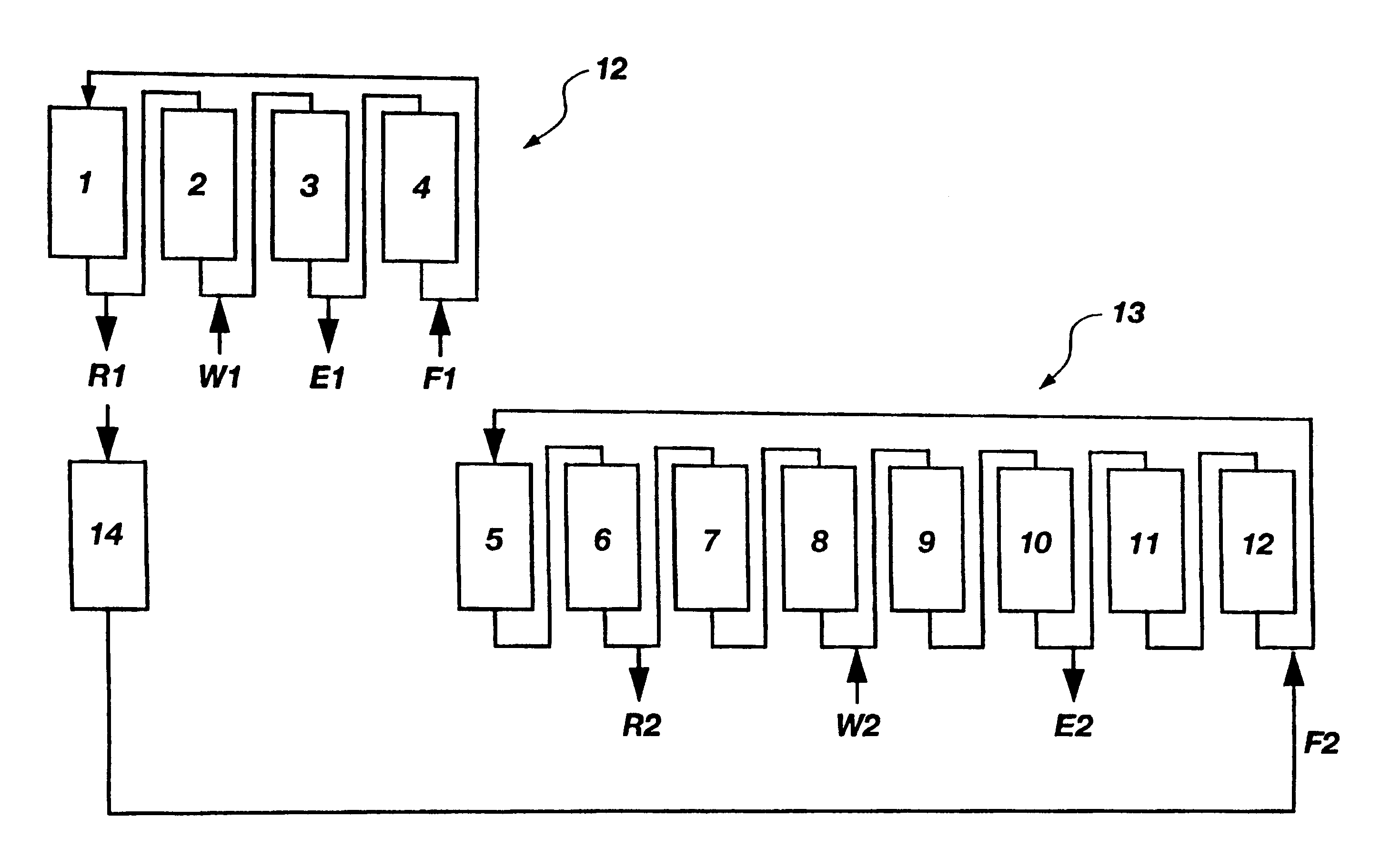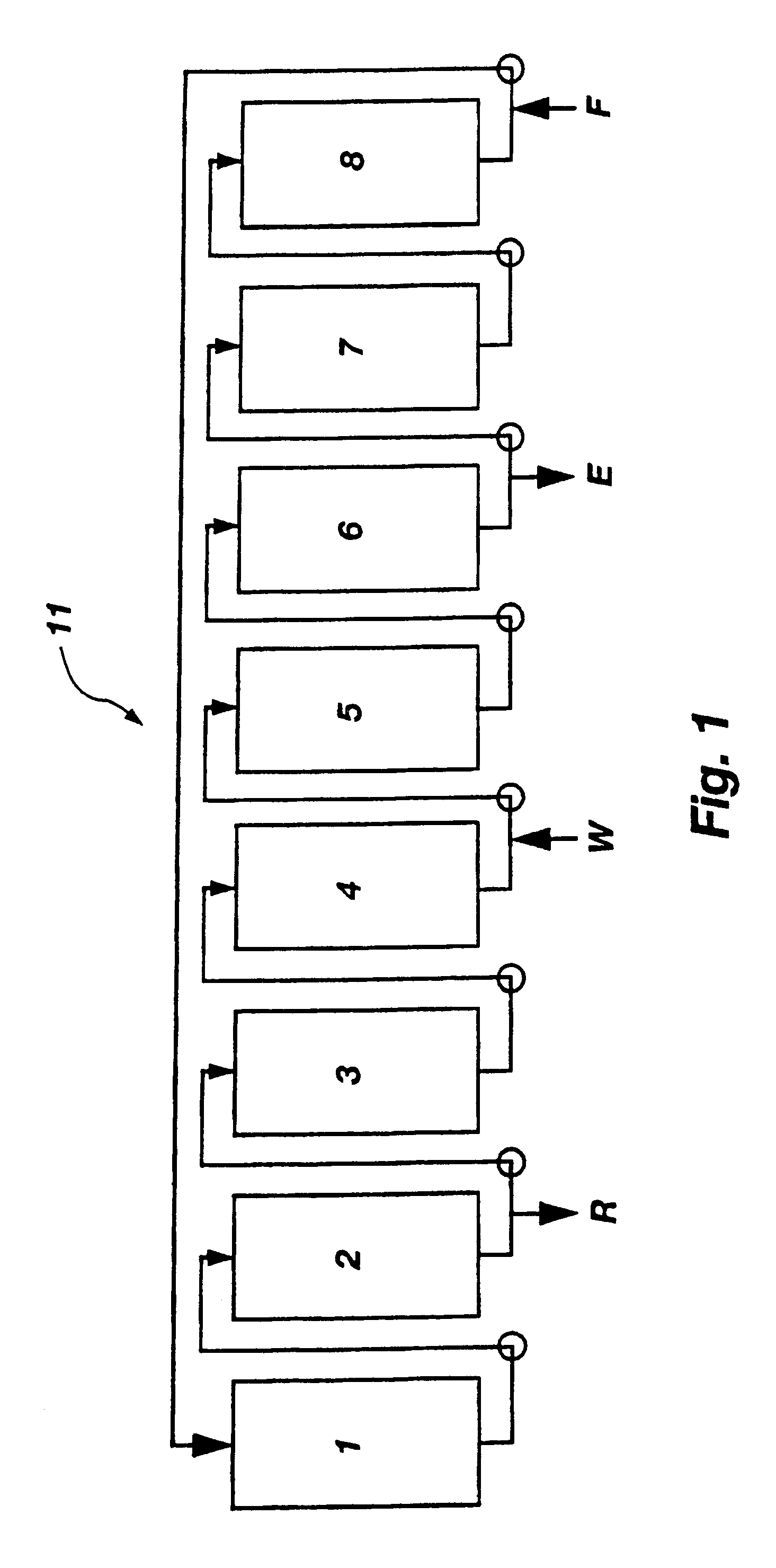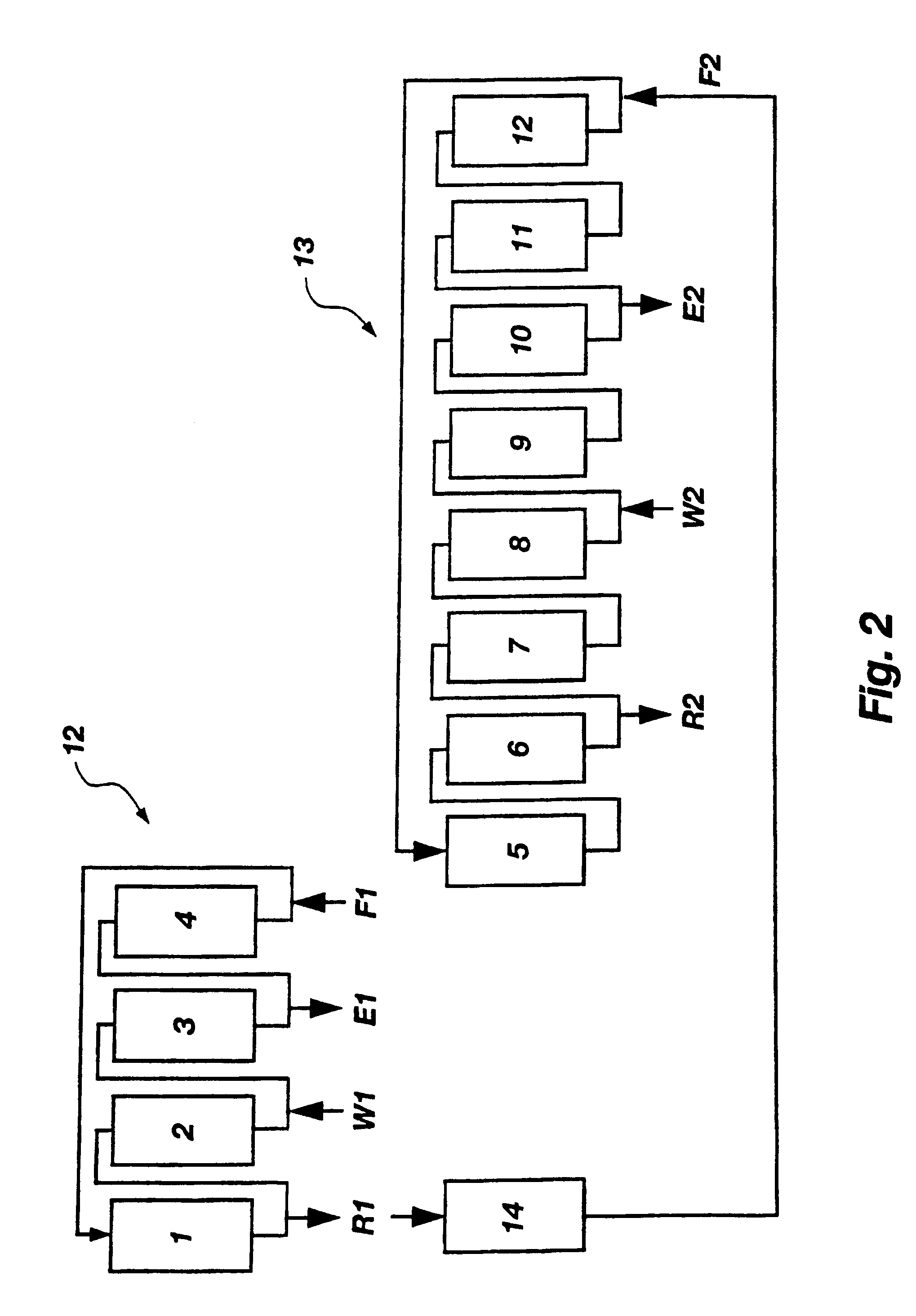Method of displacement chromatography
a chromatography and chromatography method technology, applied in the field of chromatography chromatography, can solve the problems of reducing the recovery of these valuable byproducts, reducing the purity of the sucrose product, and further crystallization procedures for the recovery of additional sugar are economically impractical, so as to improve the sucrose recovery and high purity. , the effect of high sucrose recovery
- Summary
- Abstract
- Description
- Claims
- Application Information
AI Technical Summary
Benefits of technology
Problems solved by technology
Method used
Image
Examples
example 1
An equipment configuration as illustrated in FIG. 2 was evaluated. SMB A was operated using the disclosed displacement chromatography method. The 30 minute step time on SMB A was split into two periods of 15 minutes each. Recirculation was continuous during both periods, while feed, water, extract and raffinate were continuous during period 1. Such a configuration is useful to improve the efficiency of a four-cell SMB operation and is described in U.S. Pat. No. 5,102,553. Such a method is not generally beneficial when more cells are used for SMB A. SMB B was operated with all flows continuous (recirculation, feed, water, extract and raffinate).
The following operating parameters were used:
The following results were obtained:
Of particular note is the almost complete elimination of betaine across SMB A. Betaine is representative of the normally difficult-to-remove trailing small organic compounds in the system. As a result of their elimination, SMB B easily produces a very high final s...
example 2
FIG. 3 illustrates the initial approach to equilibrium observed in SMB A prior to transition to displacement chromatography in a test run. Beet molasses is the feed material. In FIG. 3, "% dissolved solids concentration" is indicated on the vertical axis while "% of internal path length through the SMB" is indicated on the horizontal axis. This profile is in continuous circulation around the separator path. Under these conditions, the trailing area, 23, contains small organic compounds such as betaine and invert sugars; it also contains sucrose, which is in its conventional location for elution chromatography. The leading edge, 24, contains ash, poorly separated sucrose and high molecular weight compounds. As operation continues, the trailing small organic compounds begin to inventory. Although the specific time to transition is variable, after approximately 20-25 complete cycles, the % dissolved solids profile illustrated by FIG. 3 is observed to make a rather abrupt transition to ...
example 3
The cumulative contents of SMB A were collected to determine the extent of differential inventory of low molecular weight organic compounds which cause the displacement effect. For this test, sugar beet molasses was fed to SMB A until the separation profile in FIG. 3 collapsed to the equilibrated profile in FIG. 4. The operation was stopped, and all solids contained in the system were rinsed to a single container. Betaine was used as a molecule representative of the displacement components (trailing small organic molecules). Analysis demonstrated that the cumulative betaine in the equilibrated SMB A was 26.1% on dissolved solids. However, the feed material consisted of only 7.3% betaine on solids. Therefore, this result was understood to demonstrate that a large differential inventory of small organic molecules was effectively forced upon the internal equilibrated solids profile within SMB A. The displacement effect of this invention is attributable to this large inventory.
PUM
 Login to View More
Login to View More Abstract
Description
Claims
Application Information
 Login to View More
Login to View More - R&D
- Intellectual Property
- Life Sciences
- Materials
- Tech Scout
- Unparalleled Data Quality
- Higher Quality Content
- 60% Fewer Hallucinations
Browse by: Latest US Patents, China's latest patents, Technical Efficacy Thesaurus, Application Domain, Technology Topic, Popular Technical Reports.
© 2025 PatSnap. All rights reserved.Legal|Privacy policy|Modern Slavery Act Transparency Statement|Sitemap|About US| Contact US: help@patsnap.com



